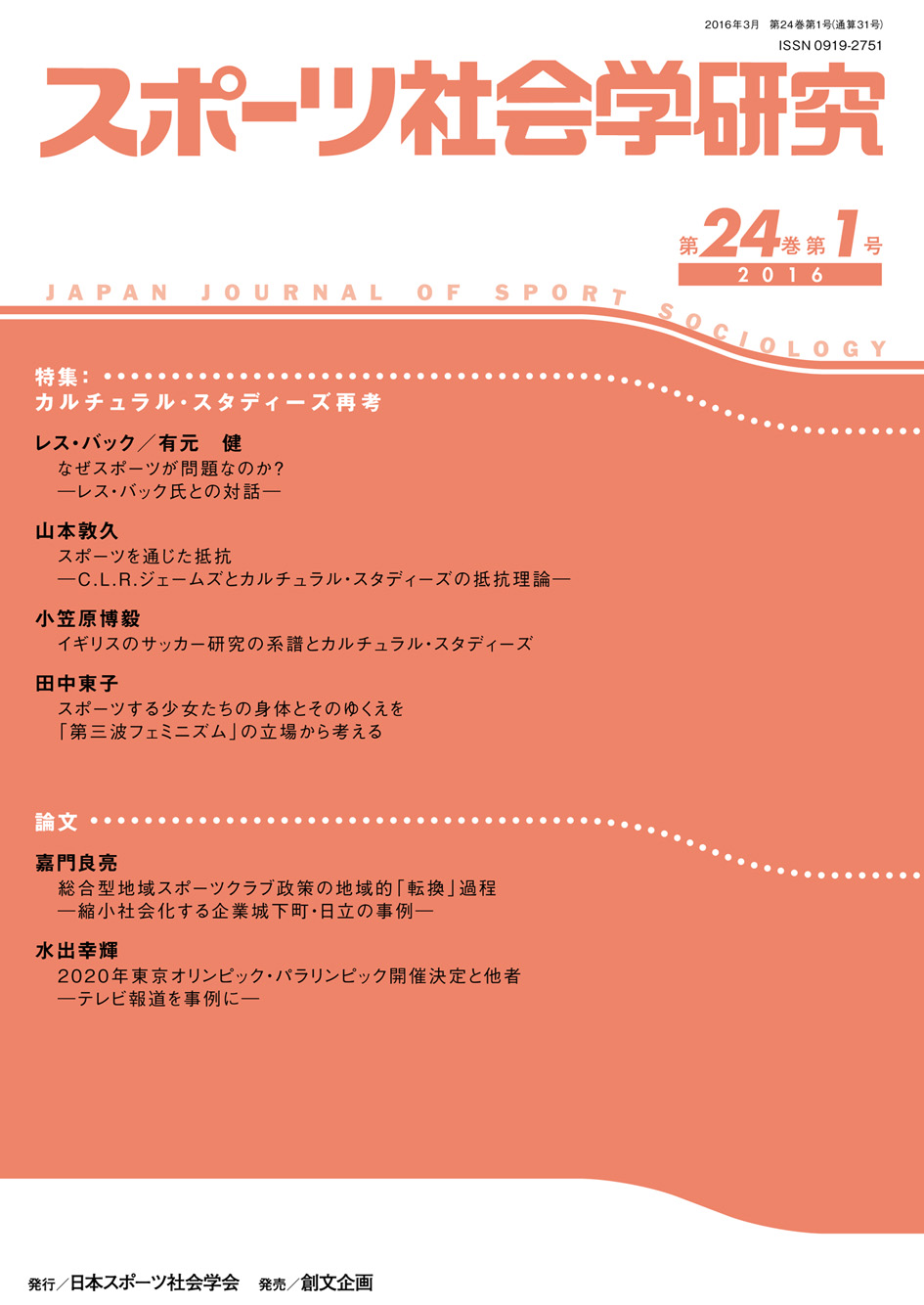Volume 30, Issue 1
Displaying 1-9 of 9 articles from this issue
- |<
- <
- 1
- >
- >|
Special Issues
-
2022Volume 30Issue 1 Pages 3-5
Published: 2022
Released on J-STAGE: April 26, 2023
Download PDF (620K) -
2022Volume 30Issue 1 Pages 7-23
Published: March 30, 2022
Released on J-STAGE: April 26, 2023
Download PDF (641K) -
2022Volume 30Issue 1 Pages 25-35
Published: 2022
Released on J-STAGE: April 26, 2023
Download PDF (502K) -
2022Volume 30Issue 1 Pages 37-56
Published: March 30, 2022
Released on J-STAGE: April 26, 2023
Download PDF (750K)
Original
-
2022Volume 30Issue 1 Pages 57-72
Published: March 30, 2022
Released on J-STAGE: April 20, 2022
Advance online publication: November 30, 2021Download PDF (723K)
Book Review
-
2022Volume 30Issue 1 Pages 73-79
Published: 2022
Released on J-STAGE: October 10, 2025
Download PDF (304K) -
2022Volume 30Issue 1 Pages 80-87
Published: 2022
Released on J-STAGE: October 10, 2025
Download PDF (380K) -
2022Volume 30Issue 1 Pages 88-96
Published: 2022
Released on J-STAGE: October 10, 2025
Download PDF (424K) -
2022Volume 30Issue 1 Pages 97-102
Published: 2022
Released on J-STAGE: October 10, 2025
Download PDF (329K)
- |<
- <
- 1
- >
- >|
